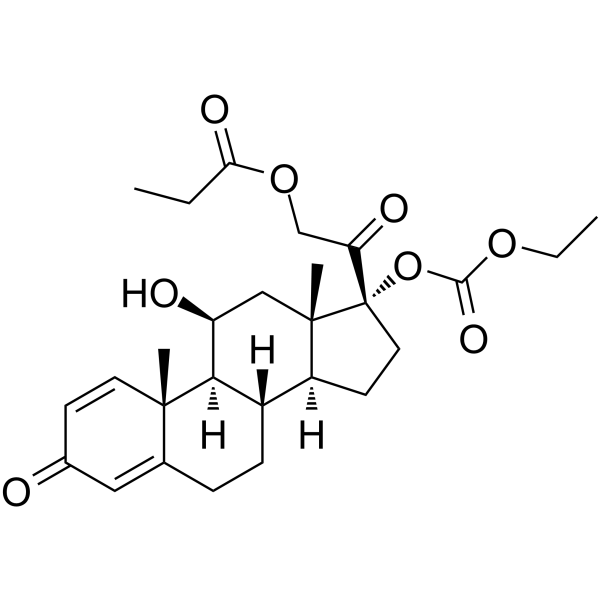Modern topical glucocorticoids and anti-infectives for superinfected atopic eczema: do prednicarbate and didecyldimethylammoniumchloride form a rational combination?
H C Korting, H Zienicke, O Braun-Falco, K Bork, R Milbradt, S Nolting, E Schöpf, H Tronnier
Index: Infection 22(6) , 390-4, (1994)
Full Text: HTML
Abstract
The addition of an anti-infective to a topical glucocorticoid preparation for superinfected atopic eczema is still controversial. To address this question in the context of the topical glucocorticoids of the non-halogenated double-ester type 0.25% prednicarbate cream was compared to the identical preparation incorporating the same amount of the disinfectant didecyldimethylammoniumchloride in patients suffering from atopic eczema carrying Staphylococcus aureus at a density of more than 10(6) colony-forming units per cm2. One of the preparations was used twice daily over 5 days according to a random plan in a blind fashion. Thereafter treatment was based on either prednicarbate cream or the corresponding vehicle according to clinical needs. Clinical and microbiological evaluation were scheduled for days 0, 6 and 34. Various clinical parameters were addressed individually as well as over all improvement using scores. A total of 143 patients was recruited. The patients of both groups improved rapidly with respect to clinical and microbiological findings. Essentially, there was no difference between the groups. Hence, the addition of an anti-infective to a topical prednicarbate preparation is not to be generally recommended.
Related Compounds
| Structure | Name/CAS No. | Molecular Formula | Articles |
|---|---|---|---|
 |
Prednicarbate
CAS:73771-04-7 |
C27H36O8 |
|
Cetuximab-induced skin exanthema: prophylactic and reactive ...
2013-10-01 [J. Cancer Res. Clin. Oncol. 139(10) , 1667-72, (2013)] |
|
Drug release and skin penetration from solid lipid nanoparti...
2011-01-01 [Skin Pharmacol. Physiol. 24(4) , 199-209, (2011)] |
|
Efficacy of crisis intervention treatment with topical corti...
2006-01-01 [Dermatology 212(1) , 66-9, (2006)] |
|
Transcriptional activity of potent glucocorticoids: relevanc...
2003-01-01 [Skin Pharmacol. Appl. Skin Physiol. 16(3) , 143-50, (2003)] |
|
Steroid-sparing effect of pimecrolimus cream 1% in children ...
2007-01-01 [Dermatology 215(4) , 325-30, (2007)] |